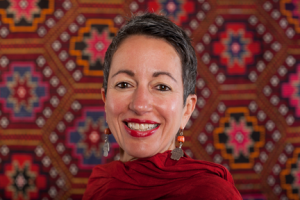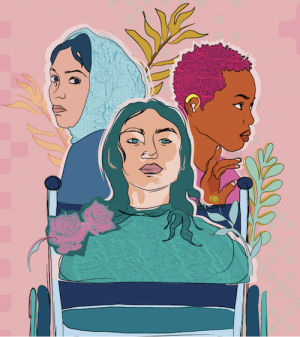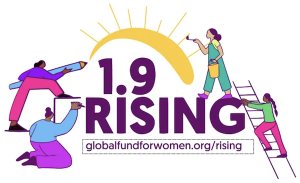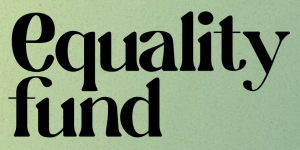 By Leila Hessini, a Transnational Strategist, Philanthropic Advisor and Reproductive Justice Advocate with more than 25 years of organizing and grantmaking experience. For five years, she was vice president of programs at Global Fund for Women, where she oversaw its strategic grantmaking, movement strengthening, global advocacy and philanthropic collaborations. For 15 years, she served on the senior leadership team of Ipas, where she published extensively on abortion rights and justice, lead global advocacy efforts, and partnered with feminist groups working on self-management, community ownership, and stigma reduction around bodily integrity and sexual and reproductive rights. She also co-founded an intersectional, feminist consulting firm, Strategic Analysis for Gender Equality (SAGE), while based in North Africa, and led the Ford Foundation Cairo office’s gender work.
By Leila Hessini, a Transnational Strategist, Philanthropic Advisor and Reproductive Justice Advocate with more than 25 years of organizing and grantmaking experience. For five years, she was vice president of programs at Global Fund for Women, where she oversaw its strategic grantmaking, movement strengthening, global advocacy and philanthropic collaborations. For 15 years, she served on the senior leadership team of Ipas, where she published extensively on abortion rights and justice, lead global advocacy efforts, and partnered with feminist groups working on self-management, community ownership, and stigma reduction around bodily integrity and sexual and reproductive rights. She also co-founded an intersectional, feminist consulting firm, Strategic Analysis for Gender Equality (SAGE), while based in North Africa, and led the Ford Foundation Cairo office’s gender work.
The start of feminist funds
Women have been philanthropists for a very long time. They give to their communities. There’s a long history across Africa and the Middle East of women moving resources to support communities, supporting communities in times of crisis for example — everything from HIV-AIDs, to conflict, to Ebola, to Covid.

The Doria Feminist Fund was created in 2021 in Lebanon to move money across North Africa and the Middle East.
Feminist funds were created in the late 80s in the Netherlands and the US, with Astrae Foundation, Mama Cash, and the Global Fund for Women. They were set up because traditional philanthropy were mainly private foundations in the US that weren’t focused on grassroots women’s organizations, gender equality or gender justice.
Across the African continent, women’s funds and feminist funds, like Urgent Action Fund Africa, and the African Women’s Development Fund, were created in the early 2000s in response to traditional philanthropy and to move resources differently across the continent. There are now at least eight feminist funds in Africa, working in various languages.
These funds have different relationships with communities and move money differently, compared to traditional philanthropy. Feminist funds are often set up by women who come from movements, women who come from the communities they serve, and women who have proximity to the issues they’re working on.
And the feminist funding principles that many of them use are about giving money in trust-based ways, giving for multiple years, and giving core support, not only project support, because organizations need both core and project funding, especially because many of them are institution builders and lead social movements and feminist movements over a long term.
Why feminist and women’s funds are needed
There’s evidence that shows that this kind of funding is needed if gender equality and gender justice are to become a reality — and we’re very far from that reality now.

According to the Global Fund for Women, only 1.9% of all donations make it to organizations dedicated to women and girls, and Black feminist social movements get even less: 0.5%.
All indicators show that if you’re born as a woman or you identify as a woman, then opportunities are restricted in many ways because of oppressive social norms, lack of access to adequate resources, gender discrimination, and anti-gender ideological movements that are rolling back abortion access and LGBTQ rights, and that define violence in restrictive ways, such as looking at gender-based violence and ignoring structural violence. So, feminist funds work to fund social movements and feminist movements in ways that will help those movements achieve their objectives, and not just achieve funder objectives.
Feminist funds tend to move money both as rapid-response funding and long-term funding. For example, the Doria Fund, based in Lebanon, moved money when the earthquake happened in Morocco and Turkey to support communities that were most affected, and it moves money quickly when war happens, such as in Gaza and the West Bank.
They also fund groups who are building a feminist vision of a different world — a vision of a world grounded in gender justice and gender equality — and to do that you have to have a long-term vision and long-term resources. For instance, the Doria Fund funded the first study on femicide in Algeria, recently published, and there’s a feminist analysis around climate, and around democratic systems, that are being funded by feminist funds.
Feminist funds and philanthropy in Canada
 The other thing is that feminist funds move resources beyond only financial capital. Non-financial resources include capacity support, capacity strengthening, knowledge building, research, and policy work across the feminist movement. And there’s a strong role — and you see this also in Canada, with the Equality Fund — to influence the philanthropic, development and humanitarian sectors, so that it’s not just about money coming into your fund. It’s also about, overall, how these sectors are thinking about where money comes from, where wealth comes from, how they move money in different ways, and the advocacy and policy work related to feminists demanding feminist foreign policies, gendered international development policies, and decolonized philanthropic, development and humanitarian sectors.
The other thing is that feminist funds move resources beyond only financial capital. Non-financial resources include capacity support, capacity strengthening, knowledge building, research, and policy work across the feminist movement. And there’s a strong role — and you see this also in Canada, with the Equality Fund — to influence the philanthropic, development and humanitarian sectors, so that it’s not just about money coming into your fund. It’s also about, overall, how these sectors are thinking about where money comes from, where wealth comes from, how they move money in different ways, and the advocacy and policy work related to feminists demanding feminist foreign policies, gendered international development policies, and decolonized philanthropic, development and humanitarian sectors.
For Canada, it’s important to think about how resources are moved differently — through international development assistance and the Equality Fund — and how to move resources directly to communities at local levels. This means using intermediaries who speak the local language and who have proximity to communities and to the issues Canadians want to fund.
Proximity is really important, and that’s something that feminist funds provide, especially when looking at community agendas and human rights, and supporting those who are most impacted by intersecting harms and marginalization. That’s an important piece for Canadians to think about.
Leila Hessini is on LinkedIn.
Read African Philanthropies: Our Narratives, on Our Terms, the next story in our series.
Friday, June 21, 2024 in Africa Philanthropy Series, For homepage, News & Events
Share: Twitter, Facebook



